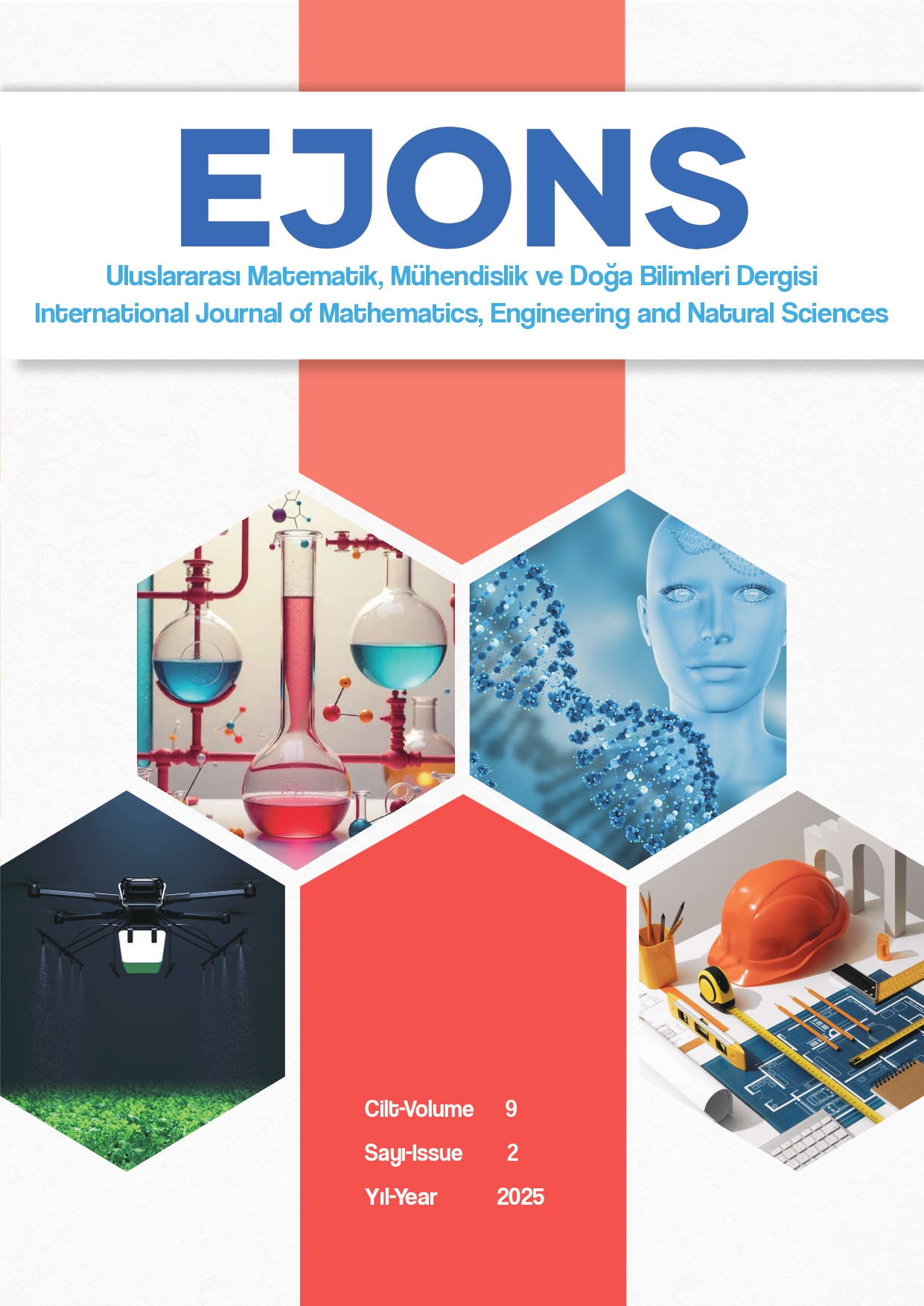Determination of Muscimol Alpha Amanitin and Metal Ions in Some Poisonous Mushrooms
DOI:
https://doi.org/10.5281/zenodo.15766688Anahtar Kelimeler:
Mushroom, ICP-MS, AAS, HPLC, Muscimol, Alpha AmanitinÖzet
Mushrooms are an important nutritional source due to their richness in proteins, carbohydrates, fatty acids, vitamins, and minerals. They offer numerous health benefits, including blood pressure regulation, antitumor activity, immune system enhancement, cholesterol control, antioxidant properties, and the regulation of heart rhythm. However, cases resulting in severe bodily harm and even death have been reported due to the consumption of wild mushrooms by individuals lacking expertise in mushroom identification and relying on hearsay or inaccurate information. Even low doses of certain mushroom toxins can lead to poisoning. Given that the levels of compounds such as muscimol, alpha-amanitin, and various metals vary depending on the mushroom species and their growing environment, this study was conducted. Used for centuries as poisons, medicines, and food, mushrooms are now recognized as an indispensable source of protein. In addition to mushroom toxins, heavy metals present in mushrooms can damage various organs, lead to more severe health outcomes, and accelerate death. In this study, a quantitative analysis of different toxins and the metal content in various mushroom species was carried out. For this purpose, both edible and toxic mushroom species were analyzed, including Agaricus bisporus (J.E. Lange) Imbach, commonly consumed as a cultivated mushroom, and the toxic species Amanita phalloides (Vaill. Ex Fr.) Link, Amanita pantherina (DC.) Krombh., and Amanita muscaria (L.) Lam., collected from the provinces of Rize, Trabzon, and Düzce. The toxins alpha-amanitin in Amanita phalloides and muscimol in Amanita pantherina and Amanita muscaria were analyzed using High-Performance Liquid Chromatography (HPLC).The concentrations of elements Ag (ng/kg), Al (μg/kg), As (ng/kg), Ba (ng/kg), Ca (μg/kg), Cd (ng/kg), Co (ng/kg), Cr (ng/kg), Cu (ng/kg), Fe (μg/kg), K (μg/kg), Mg (μg/kg), Mn (ng/kg), Mo (ng/kg), Na (μg/kg), Ni (ng/kg), P (μg/kg), Pb (ng/kg), Sb (ng/kg), Sn (ng/kg), Sr (ng/kg), Ti (ng/kg), V (ng/kg), and Zn (ng/kg) in mushrooms were measured using Inductively Coupled Plasma Mass Spectrometry (ICP-MS), while Hg (μg/kg) was analyzed using graphite furnace Atomic Absorption Spectroscopy (AAS). Additionally, the elemental composition C, N, H, S, and O in terms of percentage was determined using an elemental analyzer. The binding forms of the metals were identified using X-ray Diffraction (XRD).
Referanslar
Assemie, A., Abaya, G., 2022. The effect of edible mushroom on health and their biochemistry. International Journal of Microbiology, 8744788.
Butera, R., Locatelli, C., Coccini, T., Manzo, L., 2004. Diagnostic accuracy of urinary amanitin in suspected mushroom poisoning: a pilot study. Journal of Toxicology: Clinical Toxicology, 42(6): 901-12.
Cocchi, L., Vescovi, L., Petrini, P.E., Petrini, O., 2006. Heavy metals in edible mushrooms in Italy, Food Chemistry, 98(2): 277-284.
Erol, S.S., Akata, I., Kaya, I., 2020. Use of macrofungi in traditional and complementary medicine practices: mycotherapy. International Journal of Traditional and Complementary Medicine Research, 1: 270–78.
Jasinska, A., Stoknes, K., Niedzielski, P., Budka, A., Miroslaw, M., 2024. Mushroom production on digestate: Mineral composition of cultivation compost, mushrooms, spent mushroom compost and spent casing. Journal of Agriculture and Food Research, 18: 101518.
Lee, B.S., Lee, Y.Y., Lee, S.R., Jang, Y.S., Ryoo, R., Park, W., Kim, S.N., Lee, S., Park, C.G., Kim, K.H., 2024. Isolation of macrocyclic trichothecene mycotoxins from the lethal toxic mushroom podostroma cornu-damae and their cytotoxic activities. Separations, 11(3): 65.
Mood, M., Naseri, K., Tahergorabi, Z., Khazdair, M.R., Sadeghi, M., 2021. Toxic mechanisms of five heavy metals: mercury, lead, chromium, cadmium, and arsenic. Frontiers in Pharmacology, 12.
Satora, L.P., 2006. Panther cap Amanita pantherina poisoning case report and review. Toxicon: Official Journal Of The International Society On Toxinology, 47(5): 605-607.
Tsujikawa, K., Kuwayama, K., Miyaguchi, H., Kanamori, T., Iwata, Y., Inoue, H., Yoshida, T., Kishi, T., 2007. Determination of muscimol and ibotenic acid in Amanita mushrooms by high-performance liquid chromatography and liquid chromatography-tandem mass spectrometry, Journal of Chromatography B, 852(1–2): 430-435.
Vendramin, A., Brvar M., 2014. Amanita muscaria and Amanita pantherina poisoning: two syndromes. Toxicon: Official Journal of The International Society on Toxinology, 269-272.
Wang, M., Zhao, R., 2023. A review on nutritional advantages of edible mushrooms and its industrialization development situation in protein meat analogues, Journal of Future Foods, 3(1): 1-7.
World Health Organization and WHO Task Group, 1994. Principles and Methods for Assessing Direct Immunotoxicity Associated with Exposure to Chemicals Meeting, p.390.
Yardan, T., Baydin, A., Eden, A.O., Akdemir, H.U., Aygun, D., Acar, E., Arslan, B., 2010. Wild mushroom poisonings in the Middle Black Sea region in Turkey: analyses of 6 years. Human & Experimental Toxicology, 29(9): 767-771.
İndir
Yayınlanmış
Nasıl Atıf Yapılır
Sayı
Bölüm
Lisans
Telif Hakkı (c) 2025 EJONS Uluslararası Matematik, Mühendislik ve Doğa Bilimleri Dergisi

Bu çalışma Creative Commons Attribution-NonCommercial 4.0 International License ile lisanslanmıştır.


